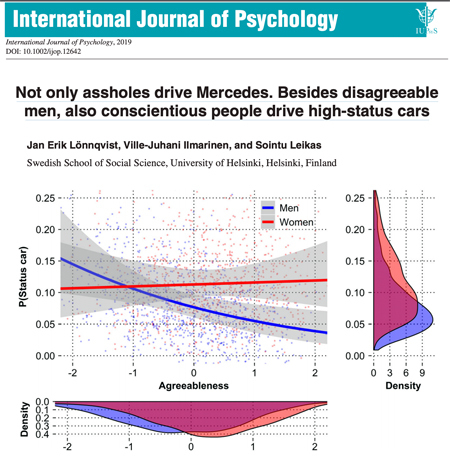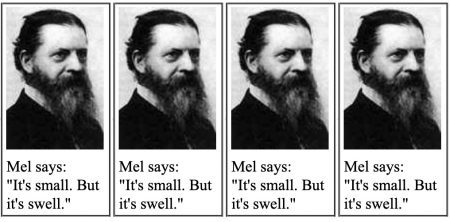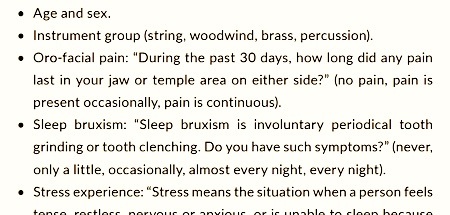Marc Abrahams's Blog, page 126
February 13, 2020
Improbable Research Saturday night in Seattle
Join us Saturday night, February 15, at the Improbable Research show at the AAAS Annual Meeting, Grand Hyatt Seattle, 71 Pine Street (in Princessa Ballrooms 1 & 2),
The annual Improbable Research session will, this year, include:
Marc Abrahams , founder of the Ig Nobel Prize ceremony
Theresa McKeon , 2019 Ig Nobel Prize winner for using a simple animal-training technique— called “clicker training” —to train surgeons to perform orthopedic surgery.
Kazutaka Kurihara , 2012 Ig Nobel Prize winner for creating the SpeechJammer — a machine that disrupts a person’s speech, by making them hear their own spoken words at a very slight delay.
(Brief!) Dramatic readings from improbable research studies, some of which have won Ig Nobel Prizes.
and other stuff.
This session is open free to the public. Bring friends. (Seating is limited—arrive early if you want seats.) #AAASmtg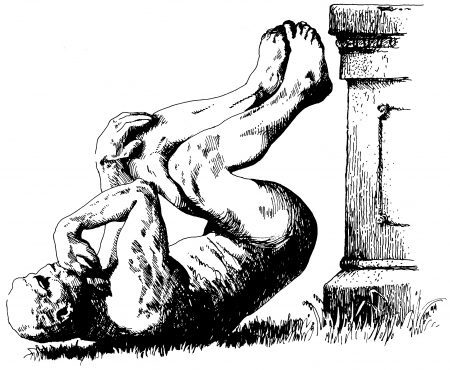
BONUS EVENT the next day
The next day—Sunday, February 16, at noon—join us for some additional, dramatic readings from improbable research studies, at Archie McPhee, 1300 N 45th St, Seattle. The Archie McPhee event, too, is free, and open to everyone.

February 12, 2020
Not Only Assholes Drive Mercedes [research study]
Evidence suggests that one can accurately judge a person by seeing what kind of car the person drives, at least in Finland, suggests a new study.
The study is: “Not Only Assholes Drive Mercedes. Besides Disagreeable Men, Also Conscientious People Drive High‐Status Cars,” Jan Erik Lönnqvist, Ville‐Juhani Ilmarinen, and Sointu Leikas, International Journal of Psychology, epub 2019. (Thanks to Kristine Danowski for bringing this to our attention.)
The authors, at the University of Helsinki, explain:
the results can be interpreted from the perspective of self‐congruity theory, according to which consumers purchase brands that best reflect their actual or ideal personalities. An important implication is that the association between driving a high‐status car and unethical driving behaviour may not, as is commonly argued, be due to the corruptive effects of wealth. Rather, certain personality traits, such as low agreeableness, may be associated with both unethical driving behaviour and with driving a high‐status car.
BONUS: Here are some advertisements for Mercedes cars:

February 10, 2020
February mini-AIR: Felons’ footware, etc
The February issue of mini-AIR is out, with these items:
02 Imminent Events
03 IN THE MAGAZINE ITSELF: Ig then Psych
04 Stuck on a Shoe
05 Limerick Challenge: Felons’ Footware
06 Perspicacity Winner (to last month’s Research Limerick Challenge)
07 MORE IMPROBABLE: Madman, Egg, Sneezing, etc.
08 Temporal Landscape of Shoes
Read it online. And/or subscribe (it’s free), and get mini-AIR emailed to you every month.
What is mini-AIR? mini-AIR is the tiny supplement of overflow detritus from the actual magazine Annals of Improbable Research.
BUT THAT’S JUST A TASTE.
DEVOUR MUCH, MUCH MORE IMPROBABLE STUFF.
SUBSCRIBE TO THE MAGAZINE ITSELF!

Cellists can live longer than rock musicians [study]
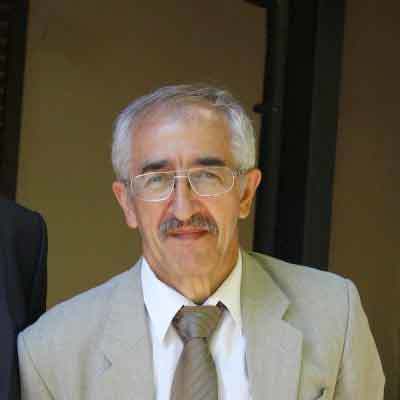 If you’re thinking of becoming a professional musician, and you’re keen on a long lifespan, then you might like to examine a 2014 paper published in the journal Advances in Gerontology. Researchers G.M. Zharinov and V.N. Anisimov [pictured] (of the Russian Scientific Center of Radiology and Surgery Technologies and the Petrov Research Institute of Oncology, St. Petersburg, Russia) examined musicians’ records longevity data (7371 men and 1404 women), and found that :
If you’re thinking of becoming a professional musician, and you’re keen on a long lifespan, then you might like to examine a 2014 paper published in the journal Advances in Gerontology. Researchers G.M. Zharinov and V.N. Anisimov [pictured] (of the Russian Scientific Center of Radiology and Surgery Technologies and the Petrov Research Institute of Oncology, St. Petersburg, Russia) examined musicians’ records longevity data (7371 men and 1404 women), and found that :
“In the male sample, the long-livers were conductors (71.1 years, n = 1435), cellists (70.0 years, n = 260), and violinists (70.0; n = 735), while the shortest life spans were registered for rock musicians (45 years; n = 421) and singer-songwriters (54 years; n = 428). The top long-livers among women were harpists (80.9 years, n = 32), harpsichordists (79.9 years, n = 17), and conductors (79.6 years, n = 24).”
See : Music and longevity, Advances in Gerontology, October 2014, Volume 4, Issue 4, pp 283–289.
Coming Soon : Academics – which scholarly fields should you choose for a long life?
Research research : Martin Gardiner

February 7, 2020
Facial Pain and the Instruments of Finnish Orchestra Musicians
Aki Savolainen writes: “I found this one article my father was working on a year ago, which found out that musicians with sleep bruxism experience pain related to the severity of their symptoms (surprise), and the instrument they happen to be playing has no effect on the amount of pain experienced.”

The study is: “Oro-facial Pain Experience Among Symphony Orchestra Musicians in Finland Is Associated With Reported Stress, Sleep Bruxism and Disrupted sleep-Independent of the Instrument Group,” Jari Ahlberg, Jetske W Wiegers, Maurits K A van Selms, Miikka Peltomaa, Daniele Manfredini, Frank Lobbezoo, Aslak Savolainen [pictured here], and Henri Tuomilehto, Journal of Oral Rehabilitation, vol. 46, no. 8, September 2019, pp 807-812. The authors report:
As a part of a large‐scale sleep study among professional musicians in Finland, the aim of the present study was to evaluate whether the type of instrument was associated with oro‐facial pain experience among professional symphony orchestra musicians in Finland….
Conclusions: Among symphony orchestra musicians, oro‐facial pain experience seems to be related to perceptions of stress, sleep bruxism and disrupted sleep rather than [to the kind of instrument they play].

February 6, 2020
Alexander Levin joins Luxuriant Flowing Hair Club for Scientists (LFHCfS)
Alexander Levin has joined the Luxuriant Flowing Hair Club for Scientists (LFHCfS). Russell Moss, who nominated him, says:
(LFHCfS). Russell Moss, who nominated him, says:
Dr. Levin is a renowned researcher of grapes. He loves to water them and also not water them and write papers about it. One thing that he is careful to water are his long curly locks. Tales of his follicular fortitude often precede him at conferences at which he is a guest speaker. When not watering vines or trying new hair tie methods, Dr. Levin can be found exploring Southern Oregon or at the odd Wu Tang concert with his viticulture colleagues.
Alexander D. Levin, PhD, LFHCfS
Viticulturist and Assistant Professor
Department of Horticulture
Oregon State University
Southern Oregon Research and Extension Center
Central Point, Oregon, USA


February 5, 2020
Podcast Episode #203: “Who Can Touch Whom”
Who Can Touch Whom, Head on Brain in Brain, Gueguen and the Goad of Small Things, Clever Contraptions to Capture Crooks, some 2013 Ig Nobel Prize Winners, Fire-Eaters and Punk Rockers, and the Names of Bad Guys.
In episode #203, Marc Abrahams shows some unfamiliar research studies to Jean Berko Gleason, Foster the Cat, Richard Baguley, Robin Abrahams, Andrew Berry, and Chris Cotsapas. Dramatic readings and reactions ensue.
Remember, our Patreon donors, on most levels, get access to each podcast episode before it is made public.
1. Jean Berko Gleason and her cat Foster encounter:
“Topography of social touching depends on emotional bonds between humans,” Juulia T. Suvilehto, Enrico Glerean, Robin I. M. Dunbar, Riitta Hari, and Lauri Nummenmaa, Proceedings of the National Academy of Sciences, epub 2015.
2. Richard Baguley encounters:
“Henry Head: The Man and His Ideas,” Russell Brain, Brain, vol. 84, no. 4, December 1961, pp. 561–6.
“Some Reflections on Brain and Mind,” Lord Brain, Brain, vol. 86, no. 3, 1963, pp. 381-402.
”A Human Experiment in Nerve Division,” W.H.R. Rivers and Henry Head, Brain, vol. 31, no. 3, 1908, pp. 323–450.
“Clinical Meeting Held May 10, 1923: Case of Right Frontal Tumour; Cracked-pot Percussion Note over Right Frontal Bone; Left Palmar Reflex,” Dr. George Riddoch and Dr. Russell Brain, Brain, vol. 46, no. 2, 1923, p. 246.
“Speech and Cerebral Localization,” Henry Head, Brain, vol. 46, no. 4, 1923, pp. 355–528.
Brain itself eventually produced a small essay about Head and Brain and other editors of Brain.
“Editorial,” Alastair Compston, Brain, vol. 127, 2004, pp. 1689–90.
3. Robin Abrahams encounters:
“Women’s Bust Size and Men’s Courtship Solicitation,” Nicolas Guéguen, Body Image, vol 4, no. 4, December 2007, pp. 386–90. (Thanks to Charles Oppenheim for bringing this to our attention.)
“Bust Size and Hitchhiking: A Field Study,” Nicolas Guéguen, Perceptual and Motor Skills, vol. 105, no. 3, part 2, December 2007, pp. 1294–8. (Thanks to James Randerson for bringing this to our attention.):
“The Effect of Touch on Tipping: An Evaluation in a French Bar,” Nicolas Guéguen and Celine Jacob, International Journal of Hospitality Management, vol. 24, no. 2, 2005, pp. 295–9.
“The Effect of Perfume on Prosocial Behavior of Pedestrians,” Nicolas Guéguen, Psychological Reports, vol. 88, 2001, pp. 1046-8.
4. Andrew Berry encounters:
Gustano Pizzo’s U.S. Patent #3811643, “Anti Hijacking System for Aircraft,” granted 1972
Kuo Cheng Hsieh’s U.S. patent #6219959, “Net Trapping System for Capturing a Robber Immediately,” granted 2001
Charl Fourie and Michelle Wong’s “A Security System for a Vehicle” — International Patent WO/1999/032331, granted 1999
J.F. Hurd’s “Pickpocket and Coat-thief Detector” — U.S. patent 477940, granted 1892
Thomas Walsh’s “Fire Alarm Box” — U.S. patent 545141, granted 1895
Martin Plesac’s “Burglar Apparatus” — U.S. patent 978396, granted 1910
5. Jean Berko Gleason encounters:
6. Chris Cotsapas encounters:
“Paukenbelüftung durch Aufblasen eines Luftballons mit der Nase” [Middle Ear Ventilation by Blowing up a Balloon with the Nose], [article in German], S. Kaus, Laryngorhinootologie, vol. 71, no. 9, September 1992, pp. 485-6.
“Fire-Eater’s Lung,” P.E. Brander, E. Taskinen, and B. Stenius-Aarniala, European Respiratory Journal, vol. 5, no. 1, January 1992, pp. 112-4.
“Fire-Eater’s Lung: Seventeen Cases and a Review of the Literature,” Thibaut Gentina, Isabelle Tillie-Leblond, Sophie Birolleau, Saidi Faycal, Thierry Saelens, Laurent Boudoux, Daniel Vervloet, Philippe Delaval, and André-Bernard Tonnel, Medicine, Vol.80(5), 2001, pp. 291-297.
“Punk Rocker’s Lung: Pulmonary Fibrosis in a Drug Snorting Fire-Eater,” D.R. Buchanan, D. Lamb, and A. Seaton, British Medical Journal (Clinical Research Edition), vol. 283, no. 6307, Dec. 19, 1981, p. 1661.
7. Jean Berko Gleason encounters:
“Boys Named Sue: Disruptive Children and Their Peers,” David Figlio, Education, Finance and Policy, vol. 2, no. 4, 2007, pp. 376–94.
“First Names and Crime: Does Unpopularity Spell Trouble?” David E. Kalist and Daniel Y. Lee, Social Science Quarterly, vol. 90, no. 1, March 2009, pp. 39–49.
Bruce Petschek, Audio Engineer
Jon Shedler, Audio Engineer
Seth Gliksman, Production Assistant
Available on Spotify, Apple Podcasts, Overcast, Google Podcasts, AntennaPod, BeyondPod and elsewhere!

Latin-language performance of The Beatles song “Yesterday”, academically
Fr. Keith Andrew Massey, PhD performs what he says is the first Latin-language version of the Beatles song “Yesterday”. Massey specifies that this video is “For-Educational-Use-Only”.
BONUS: Some years ago, Massey took part in the Dance Your Dissertation competition. Here is his submission:

February 4, 2020
Limerick Challenge: His Perspicacity on Tick Paralysis
This month’s RESEARCH LIMERICK challenge — Devise a pleasing limerick that encapsulates this study:
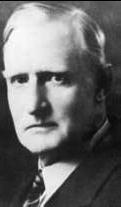 “The Perspicacity of Seymour Hadwen on Tick Paralysis — A Commentary,” M.W. Felz, Wilderness and Environmental Medicine, vol. 11 No. 2, 2000, pp. 113-121. The study’s author explains: “A commentary on a study of tick paralysis by Seymour Hadwen [pictured here, we think] is presented. Clinical and investigative insights are evaluated. The similarities between Hadwen’s observations and those of Allen Steere involving Lyme disease are explained. Research and clinical observations supporting Hadwen’s findings are discussed.”
“The Perspicacity of Seymour Hadwen on Tick Paralysis — A Commentary,” M.W. Felz, Wilderness and Environmental Medicine, vol. 11 No. 2, 2000, pp. 113-121. The study’s author explains: “A commentary on a study of tick paralysis by Seymour Hadwen [pictured here, we think] is presented. Clinical and investigative insights are evaluated. The similarities between Hadwen’s observations and those of Allen Steere involving Lyme disease are explained. Research and clinical observations supporting Hadwen’s findings are discussed.”
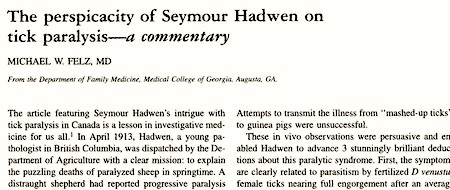
Submit your perfectly formed, delightfully enlightening limerick to:
PERSPICACITY LIMERICK COMPETITION
c/o
This particular LIMERICK CHALLENGE is part of the January 2020 issue of mini-AIR.
About mini-AIR
mini-AIR is our tiny, free email supplement to the magazine. Add yourself to the distribution list, and see a fresh limerick challenge every month, and also the winner of the previous month’s limerick challenge, and also lots of other stuff.

February 3, 2020
Ig Nobel Economics Prize winner Ebbers, ex-chief of Worldcom, dies
The New York Times and the AP report the death of Ig Nobel Prize winner Bernard Ebbers:
Bernard J. Ebbers, who spent 12 years in prison after presiding over a notorious $11 billion accounting fraud as chief executive of the telephone company WorldCom, died on Sunday. He was 78.
The 2002 Ig Nobel Prize for economics was awarded to the executives, corporate directors, and auditors of Enron, Lernaut & Hauspie [Belgium], Adelphia, Bank of Commerce and Credit International [Pakistan], Cendant, CMS Energy, Duke Energy, Dynegy, Gazprom [Russia], Global Crossing, HIH Insurance [Australia], Informix, Kmart, Maxwell Communications [UK], McKessonHBOC, Merrill Lynch, Merck, Peregrine Systems, Qwest Communications, Reliant Resources, Rent-Way, Rite Aid, Sunbeam, Tyco, Waste Management, WorldCom, Xerox, and Arthur Andersen, for adapting the mathematical concept of imaginary numbers for use in the business world. [NOTE: all companies are/were U.S.-based unless otherwise noted.]
Here’s video of the announcement at the 2002 Ig Nobel Prize ceremony, in Sanders Theatre, Harvard University (the human curtainrods, partially clad, are the Dresden Dolls):

Marc Abrahams's Blog
- Marc Abrahams's profile
- 14 followers


